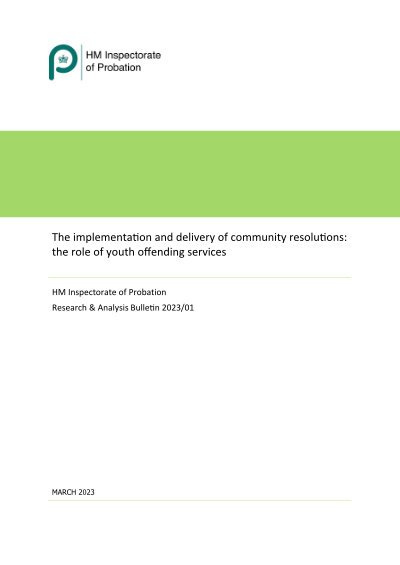By HM Inspectorate of Probation (UK)
The use of out-of-court disposals (OOCDs) with young people who break the law is increasing. One OOCD is a community resolution (CR) which allows the police to deal with less serious offences in an informal way, providing a diversionary approach without formal court proceedings. This can allow young people to avoid having a criminal conviction on their record, give victims the opportunity to have their say, and provide a more efficient resolution than pursuing a criminal conviction. Youth Offending Teams (YOTs) perform a key role in the delivery of CRs, yet there remains a significant gap in knowledge about how CRs are delivered with young people. This bulletin focuses on findings from research which explored how youth offending services implement and deliver CRs in England and Wales, documenting working practices as well as key enablers and barriers to effective practice.
Research & Analysis Bulletin 2023/01 . Manchester: HM Inspectorate of Probation, 2023. 40p.





















